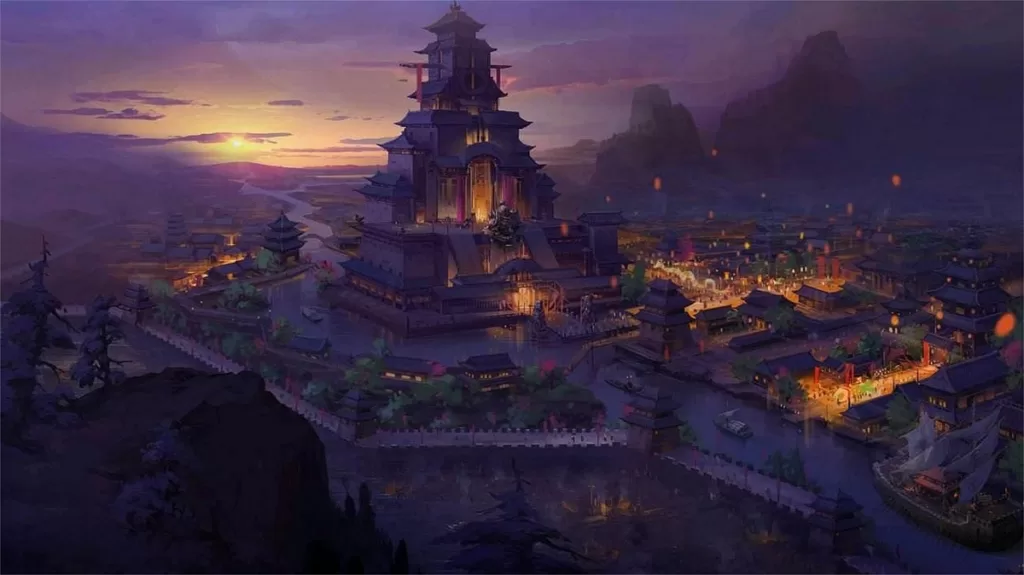História da cidade fantasma de Fengdu


Cidade fantasma de Fengdu, often simply referred to as “Ghost City,” is a unique and culturally significant tourist attraction located in Fengdu County, Chongqing Municipality, China. This ancient city has a rich history that dates back over two thousand years and is closely associated with Chinese folklore, religion, and mythology. Here’s a detailed introduction to the history of Fengdu Ghost City:
Ancient Origins (c. 200 BC – 200 AD): Fengdu Ghost City’s history can be traced back to the Western Han Dynasty (c. 200 BC – 9 AD) and the Eastern Han Dynasty (25 AD – 220 AD). According to legend, two officials, Wang Fangping and Yin Changsheng, became Taoist immortals through their devotion to the Daoist way of life. After their deaths, they were said to reside in Fengdu as “Kings of the Underworld” and began to govern the afterlife, judging and punishing souls based on their deeds in the mortal world.
Taoist Influence (Tang Dynasty – Song Dynasty): During the Tang Dynasty (618-907 AD) and the subsequent Song Dynasty (960-1279 AD), Fengdu Ghost City became increasingly associated with Taoism. Many Taoist temples and shrines were constructed in the area, and it became a place where Taoist rituals and ceremonies were conducted to guide the souls of the deceased to the afterlife.
Incorporation of Buddhism (Yuan Dynasty – Ming Dynasty): With the arrival of the Yuan Dynasty (1271-1368 AD), Buddhism began to influence the religious landscape of Fengdu Ghost City. This led to the blending of Taoist and Buddhist beliefs, resulting in a unique fusion of both traditions in the city’s religious practices.
Development of Ghostly Architecture (Ming Dynasty – Qing Dynasty): During the Ming (1368-1644 AD) and Qing (1644-1912 AD) Dynasties, the city’s architecture began to take on a distinctive and eerie appearance, with intricate carvings, statues, and paintings depicting scenes from the afterlife, the underworld, and various mythical creatures. The city’s layout and design aimed to recreate the Chinese vision of the underworld, serving as a place where the living could come to understand and prepare for the afterlife.
Tourism and Modern Development (20th Century – Present): Fengdu Ghost City has evolved into a popular tourist destination in modern times, attracting visitors from all over the world. The city’s unique blend of history, mythology, and cultural significance has made it a must-visit location for those interested in Chinese folklore and religious practices. Today, visitors can explore the temples, shrines, statues, and eerie sculptures that depict various aspects of the afterlife.
Renovation and Preservation (21st Century): In recent years, efforts have been made to preserve and renovate Fengdu Ghost City to ensure its historical and cultural significance endures for future generations. While some of the original structures have undergone reconstruction, the city remains a vital site for the study of Chinese religious and mythological traditions.
Fengdu Ghost City stands as a testament to China’s rich cultural heritage, blending elements of Taoism, Buddhism, folklore, and myth into a unique and captivating destination that continues to intrigue and educate visitors about Chinese beliefs regarding the afterlife.
Outros factos sobre a cidade fantasma de Fengdu:
- Estátuas na cidade fantasma de Fengdu
- O papel da cidade fantasma de Fengdu no inferno
- Porque é que Fengdu é uma cidade fantasma?
Factos sobre a cidade fantasma de Fengdu